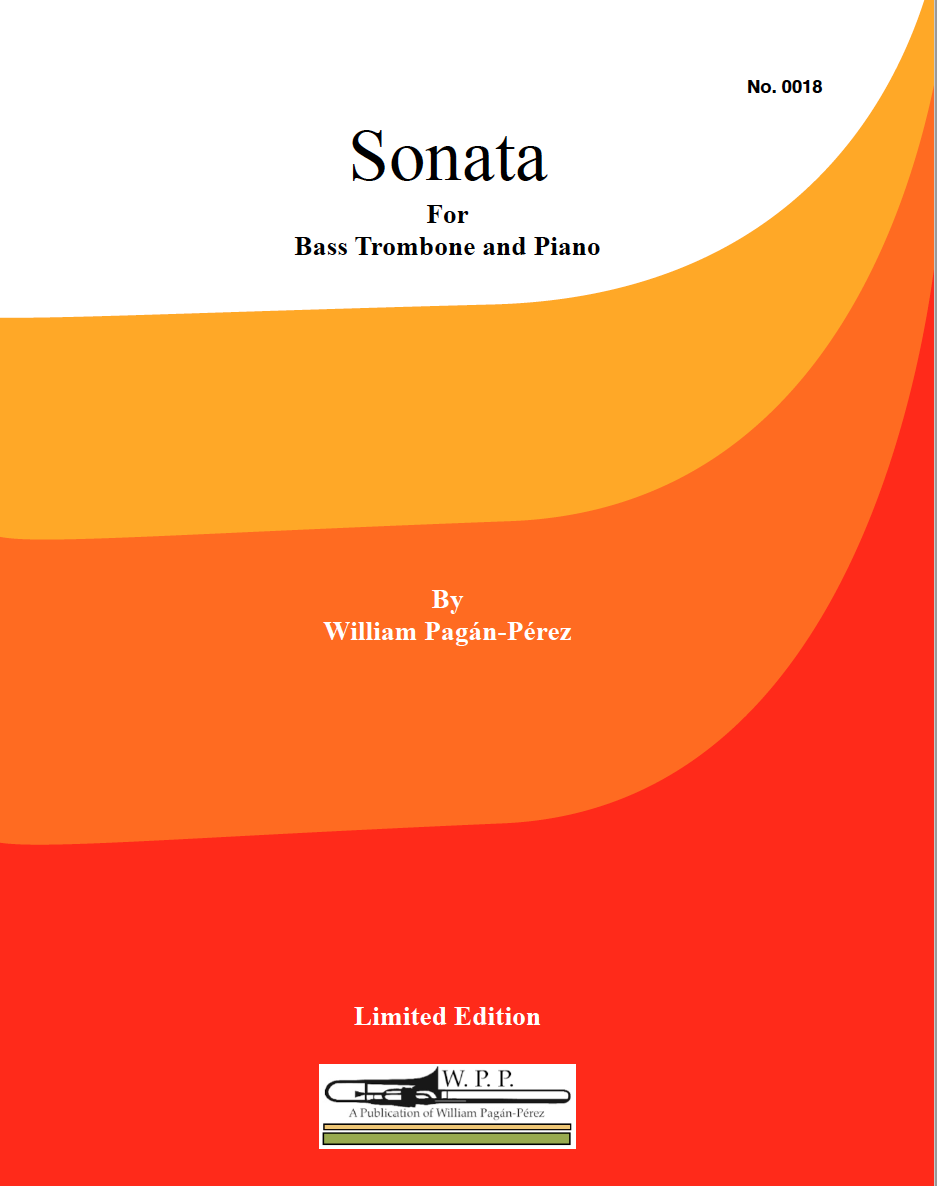William Pagán-Pérez
 Sonata:
Sonata:
Bass trombone and piano
Buffalo, NY, United States
Publisher: William Pagán-Pérez
Date of Publication: 2016
URL: http://www.williampagan.com
Score and solo part.
Primary Genre: Solo Bass/Contrabass Trombone - with piano
 Sonata:
Sonata: Bass trombone and piano
Buffalo, NY, United States
Publisher: William Pagán-Pérez
Date of Publication: 2016
URL: http://www.williampagan.com
Score and solo part.
Primary Genre: Solo Bass/Contrabass Trombone - with piano
Bass trombonist and composer William Pagán-Pérez has added to his growing list of brass works with a new Sonata for bass trombone and piano. A native of Puerto Rico, Mr. Pagán-Pérez often incorporates Latin American influences in his music and this work is no different. Additionally, each movement is composed in tribute to one or two female Latin American singers including Myrta Silva (1927-1987), Dagmar Rivera (b.1955), Ruth Fernández (1919-2012), Sylvia Rexach (1922-1961), and Amanda Miguel (b.1956). The first movement, composed in sonata form, begins by stating the principal theme of the cyclical work slowly in D minor. From there it transitions into a bright alla breve with echoes of the clave rhythm in the accompaniment. After a repeat of the exposition and a short development the movement closes decisively in D major. The second movement, a danza in G minor, once again opens with the principal theme of the work before introducing a secondary theme that is similar in character. The movement has numerous repeated sections which, given the relationship between a traditional danza and similar nineteenth century European dances, contradance, minuet, etc., is not out of character. A brief third movement in D minor introduces rhythms derived from the bolero and cha-cha-chá while the final movement, in E minor, uses a less traditional form inspired by Amanda Miguel’s 1981 pop hit, “Él Me Mintió” (“He lied to me”). Written in bass clef throughout and with a melodic range of GG-c², the Sonata for bass trombone and piano by William Pagán-Pérez is melodic and approachable. What sets the piece apart from other works for bass trombone is the extensive use of traditional and more popular Latin-American rhythms and forms. Listening to additional examples of these Latin styles, with a particular focus on rhythms, accents, and phrasing, is recommended in order to perform this piece effectively.
Reviewer: Eric High
Review Published June 24, 2023
Review Published June 24, 2023